The world of cannabis legalisation is messy. The efforts to regulate the plant’s use have created a complex and ever-changing global legal landscape. Countries face challenges when complying with international treaties and regulating an emerging industry. This also creates confusion among ordinary people about what they are allowed to do in their countries.
Because of this, understanding the cannabis regulatory landscape is essential.
This article will review terms like decriminalisation, legalisation, medical and recreational use, and home growing. We’ll also explore the historical path towards legalisation, the regional legal frameworks, models of state governance and the challenges facing the cannabis industry.
When we talk about full legalisation, we mean countries that have legalised the whole cannabis plant for personal and commercial uses, possession, production and distribution for medical, recreational, and therapeutic purposes. Legalisation refers to countries where cannabis or parts of the plant (seeds, cannabinoids, extracts, hemp) are legal for personal use, possession, and cultivation for medical, recreational, and therapeutic purposes. This excludes the commercial and recreational markets.
The content is divided into main topics and subtopics as follows:
The turbulent history of global cannabis legalisation
Even though the human species has been using cannabis for more than 10,000 years, after the industrial revolution, governments and societies worldwide struggled to determine its place in our modern lives.
Prohibition era
The prohibition era began in the early 20th century when cannabis was first banned in the United States. This was mainly due to anti-drug campaigns led by politicians and the media, who painted cannabis as a dangerous and addictive drug that would lead to moral decay and social unrest. This was tied to the massive influx of Mexican immigrants in the US following the Mexican Revolution in 1910. The term marijuana, which has Mexican-Spanish roots, came to be associated with the plant in order to elicit negative sentiments about drug use and immigrants. Anti-drug campaigners warned about the emerging Marijuana Menace. These sentiments proliferated globally, and governments shifted their policy towards prohibition.
Starting in 1910, countries around the globe gradually outlawed all aspects of the cannabis plant and its use. There were a few exceptions, like the Netherlands and Paraguay, where the possession of small amounts was decriminalised. Over the years, fears grew stronger, and cannabis became increasingly stigmatised.
In 1961, the United Nations adopted the Single Convention on Narcotic Drugs. This is the main international treaty that controls all aspects of some specific narcotics and introduces the drug Scheduling system we all enjoy today. More on that later.
By the 1970s, the US federal government under President Nixon had declared a full-on war on drugs, and cannabis was one of its primary targets.
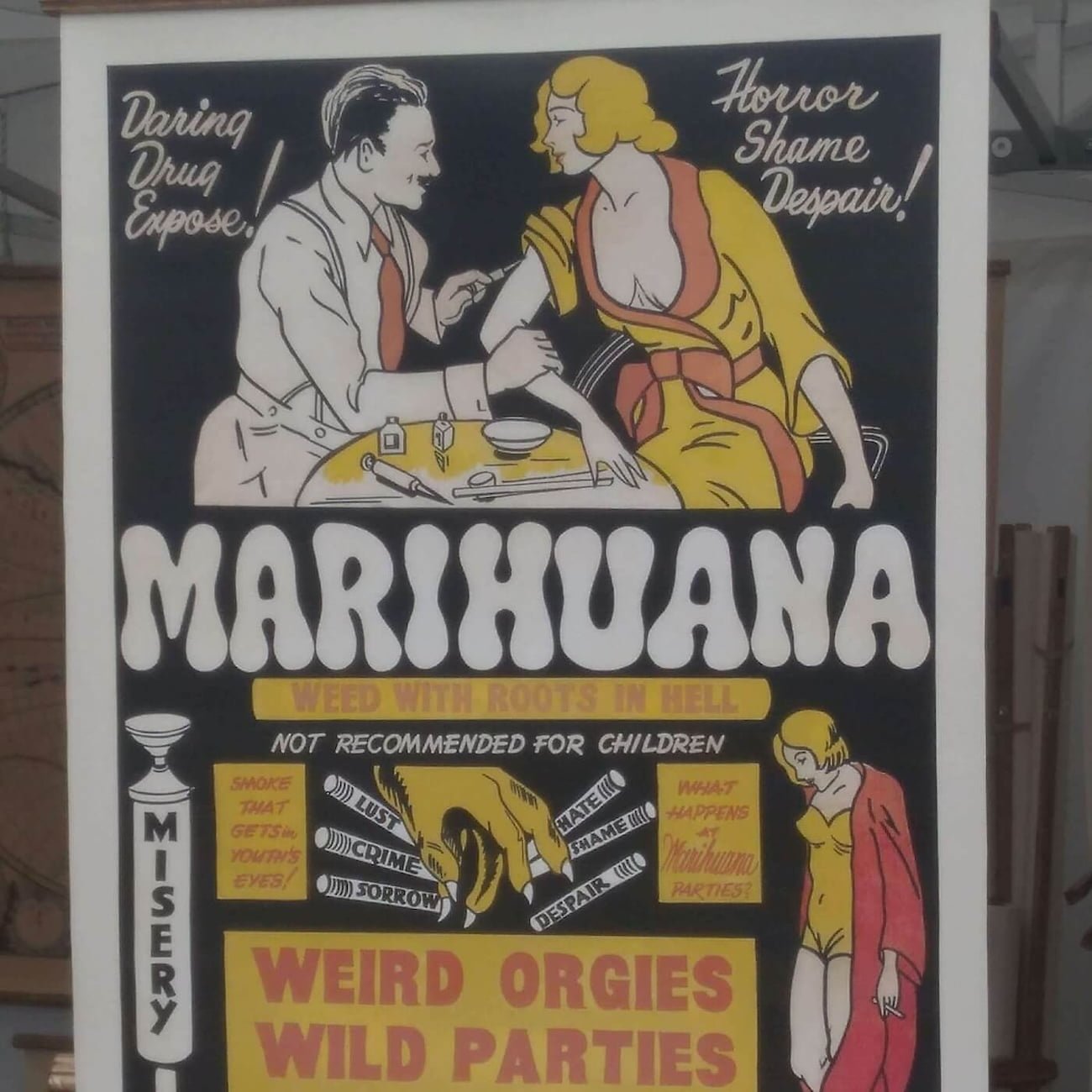
A counterculture
This however led to the rise of an active opposition and a vibrant counterculture. Despite the government’s efforts, people continued to use cannabis, and many artists and political activists began to speak out. A new major public shift was taking place.
In 1974, High Times magazine released its first issue. The magazine was ahead of its time, covering topics about cannabis’s medicinal properties and hemp use.
Beginning of cannabis legislative change
In 1996, California voters led the charge and passed Proposition 215, which legalised medical cannabis in the state. This was a significant turning point in the legalisation movement, which sparked a wave of similar initiatives nationwide.
With the turn of the 21st century and the new millennium, the world governments slowly began reversing their cannabis policy restrictions, first by decriminalising small amounts for personal use and then gradually legalising medical cannabis. Over the following decades, more and more countries passed laws that allowed patients with certain medical conditions to use cannabis as a form of treatment.
This momentum continued to build, and by 2012, Colorado and Washington became the first states to legalise recreational cannabis for adults. In 2014, Colorado also introduced the first recreational dispensaries.
In 2013, Uruguay became the first country in the world to fully legalise recreational marijuana and begin steps towards building a commercial market. Canada followed suit in 2018. In 2021, Malta legalised recreational cannabis cultivation and use for 18-year-olds and above, becoming the first country in the European Union to do so. In 2022, Thailand became the first Asian country to legalise cannabis.
But cannabis legalisation is more than just being able to get high. It’s about undoing the damage caused by decades of prohibition and creating a safer, more equitable society. For too long, cannabis prohibition is being used as a tool of oppression, particularly against minorities. It leads to mass incarceration and countless lives being ruined.
Legalisation is a step towards righting these wrongs and creating a more just society. It allows people to use cannabis safely and responsibly without fear of arrest or persecution. It also enables universities and medical institutions to receive funding and conduct necessary research into cannabis, so we can better understand its effects on us. Legislation helps form a regulated market that generates revenue and creates jobs, boosting local economies.
What it all means. Cannabis legalisation, decriminalisation and state models
Now that we know a little bit about the history of prohibition and legalisation, let’s discuss the terminology related to cannabis regulation and the models which countries use. We’ll also discuss some of the issues they are facing.
Medical legalisation
The legalisation of medical use is concerned with the medicinal properties of the plant. As a therapeutic drug, treating specific symptoms or conditions, cannabis is subjected to heavy regulation. It’s also up to the government to decide how the medicine is produced, supplied and distributed. In this situation, big pharmaceutical companies most commonly get involved. Usually, this leads to market monopolisation. The process for patients involves a doctor visit, diagnoses, and prescription for medicine with which you can get a specific drug from a licensed location, most commonly a pharmacy. It includes both medicinal cannabis and pharmaceutical drugs.
Medicinal cannabis is specifically grown for medicinal purposes, where the pharmaceutical drugs are compounds made from cannabinoids or cannabis extracts and derivatives.
If you want to know more about medical cannabis, feel free to check our article about what conditions it can help you treat.
Recreational use
It seems that recreational use is the most accessible form to regulate. Governments allow a certain amount for personal use and possession while excluding production and distribution. You are free to smoke at home and carry weed in public.
Home growing
Home growing is generally tied to decriminalisation efforts. The idea is to allow people to grow a certain number of plants at home so they don’t engage with the black market.
This is a vital part of the legalisation process. However, it doesn’t address key issues. Most of us don’t have the time or the resources to invest in growing a plant for 3-4 months with uncertain results. We prefer to have it readily available in local stores.
Like any other commercial crop, like tomatoes or potatoes, we are free to grow it ourselves. It would certainly be more rewarding, but who has the ability to do it?
Commercial legalisation
Commercial legalisation remains the biggest hurdle for governments. Not only does it has to be compliant with international treaties, but also how do you allow people to produce, supply, buy and sell a substance at their own discretion? Another challenging step is the creation of universal market regulations – who grows it, what are the industry standards, who sells it, how do you transport it, and how do you control quality?
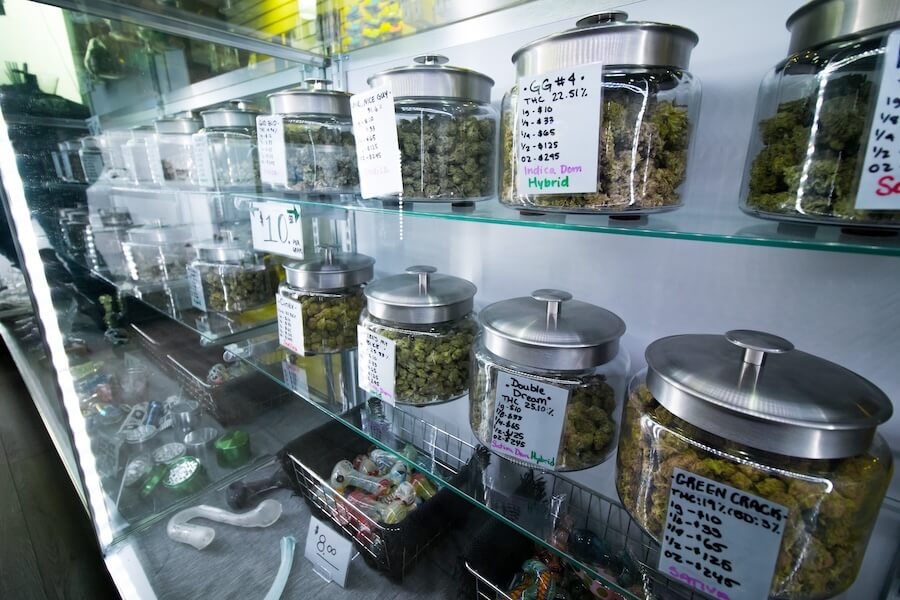
Governments are also subjected to regional treaties. For instance, the Schengen Zone in Europe includes regulations on narcotic substances, which the member countries must comply with.
Our current free market economy system might present more challenges than solutions. Governments are reluctant to leave the market to self-regulate a product that has physical and psychological effects on its consumers. On the other hand, this creates a problem with over-regulation, like in California, where robust rules have essentially destroyed the local market.
Decriminalisation
Decriminalisation is broadly defined as reducing the penalties for a particular criminal act or reclassifying a criminal offence as a civil offence.
Decriminalisation is usually the first step governments take when trying to regulate cannabis. It offers a middle ground allowing people to possess and smoke cannabis at home while the plant remains illegal nationally. The method is designed to shift the focus away from small-time users and to turn attention to black markets and illicit growers. This results in fewer incarcerations for possession and fewer penalties. These would include no penalties, civil fines, drug education, or drug treatment.
It’s not a perfect measure by any means, as it doesn’t address the issue of how people are obtaining their weed in the first place. The most glaring example is the Netherlands. In the country, public consumption is regulated via coffee shops. These are places where you can buy and smoke weed legally. However, the issue remains how these coffee shops are getting their cannabis. They operate in a grey area, where they are not allowed to grow their own cannabis but are allowed to sell it. This means that owners have to illegally get cannabis from black market growers and then transport it to their coffee shop, which is also illegal. Once the cannabis is in the coffee shop, it becomes legal to sell.
Current cannabis regulatory landscape
Here we are getting deeper into the matter by reviewing the current state of global cannabis regulation. We will discuss the UN international treaties handling cannabis, the general regulatory landscape worldwide, and some key regional players.
International treaties
People might not be aware that international drug treaties exist. And when it comes to drug laws in foreign countries, myths abound. So, any explanation of the system should start with the basics—the international drug control treaties.
Three United Nations treaties form the basis of global drug control laws: the Single Convention on Narcotic Drugs from 1961 (with some amendments made in 1972), the Convention on Psychotropic Substances from 1972, and the Convention Against Illicit Traffic in Narcotic Drugs and Psychotropic Substances from 1982. The treaties established global control measures to ensure that psychoactive substances are used for medical and scientific purposes and not diverted into illegal channels.
Under the Single Convention, opiates, cannabis, and cocaine are strictly limited to these purposes. At the same time, the 1971 Convention added synthetic, prescription, and hallucinogenic drugs to the list. The 1988 Convention required member countries to criminalise personal possession of drugs for the first time. The Conventions are legally binding under the 1969 Vienna Convention on the Law of Treaties: a nation “may not circumscribe its obligations under the treaties by enacting a conflicting domestic law.” However, the powers of the International Narcotics Control Board, created to ensure compliance, are limited to enforcement through diplomacy.

The Single Convention introduces a scheduling system that ranks narcotic substances from most to least restrictive – Schedule IV, Schedule I, Schedule II and Schedule III, respectively. Schedule IV is the category of drugs, such as heroin, that are considered particularly dangerous, have high levels of addiction, with no medical benefits. Schedule I includes drugs that are limited to medical and scientific purposes.
Reclassification of cannabis and acknowledgement of its medical benefits
The most notable change in the treaties was made in 2021. The UN Commission on Narcotic Drugs removed cannabis and cannabis resin from its Schedule IV classification. The move was recommended by the World Health Organisation. This means that cannabis and cannabis resin is no longer classified as among the most harmful substances and are acknowledged as having medical benefits.
So, what is the situation in each region?
First, some basic statistics.
To date, 42 countries have legalised medical cannabis, along with 35 states in the US. Twenty-one US states have legalised it for recreational use. Around 50 countries have decriminalised some form of possession and personal use.
Two countries have fully legalised marijuana nationwide – Canada and Uruguay. The countries where cannabis is commercially available are Canada, Uruguay, some states in the US and Thailand.
Decriminalising personal use and legalising medical use are usually the first steps governments take when regulating cannabis. To gain access to marijuana, people can either grow it at home, cultivate it collectively as part of a non-profit organisation or receive it as a medicinal drug. North America and Europe offer a more lenient approach towards cannabis.
North America
So far, the most comprehensively developed and regulated market is in Canada and the US. It’s also the most liberal and freely available to people as it’s commercially orientated. Medical use is also very inclusive. People require just a medical card to access the vast selection of flower, edibles, cosmetics and therapeutics. After a simple visit to the doctor, most patients will receive a medical card, with which they can later go to a licensed dispensary. They are not tied to pharmaceutical companies. Doctors don’t need to prescribe medications. It’s up to you to decide how to self-medicate.
In Mexico, in 2018, the supreme court ruled that the prohibition on cannabis possession and cultivation for personal use is unconstitutional. In 2021, Mexico voted to legalise recreational use, home growing, and the possession of small amounts. Since then, however, the government has been dragging its feet, and bureaucratic roadblocks have slowed regulation. Currently, there isn’t a legal framework that allows the legal sale of marijuana. There is no commercial production either.
Europe
Europe is slowly developing a vast medical market, and recreational use is banging on the door. Most European countries have legalised medical marijuana. CBD and hemp products are also legal for commercial use in the European Union, although the rules around access can vary from place to place. A growing number of countries have decriminalised small amounts of cannabis, which means that penalties for possession are now a thing of the past. But there’s a catch – the marijuana laws in Europe can be a little confusing. Some countries have only legalised specific derivatives of the cannabis plant and not the plant itself or other natural forms of it. The industry is more tightly regulated and focused on treating patients rather than selling goods.
The major players on the continent are the Netherlands, Spain, Germany and the UK.
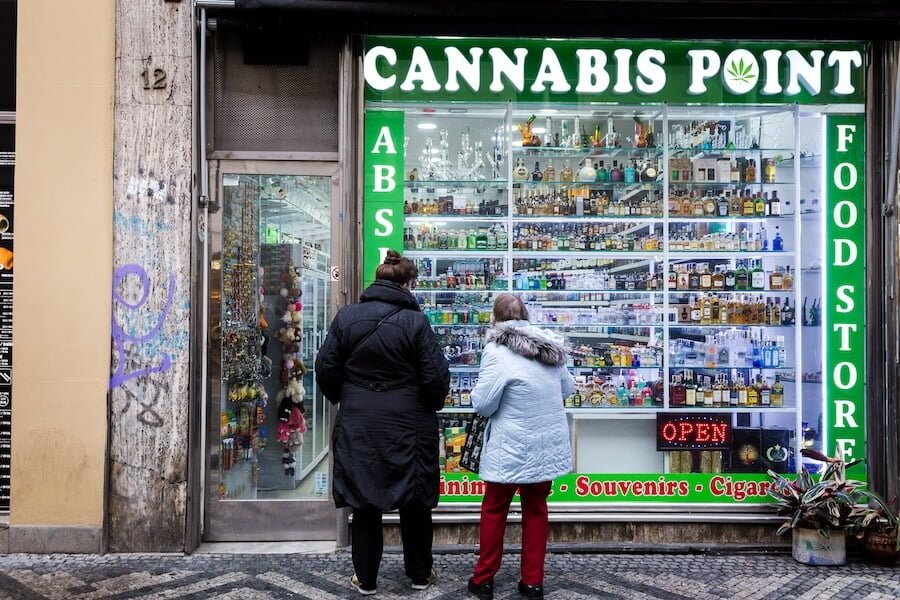
The EU countries are generally adopting a more casual view of recreational smoking. Authorities may be more lenient towards recreational use in public spaces. Spain and the Netherlands, for instance, have a strong cannabis-smoking culture. Whenever you walk the streets of Barcelona or Amsterdam, you’ll smell the distinguished herb aroma almost everywhere. Prague’s city centre in the Czech Republic is populated with weed shops. However, they cater primarily to tourists and sell very low-potency THC products (less than 1%). This is because cannabis is commercially illegal. So, if you go there, don’t get fooled by the many signs advertising weed products.
Latin America
Despite its reputation, Latin countries are pretty conservative about drug legalisation. However, in recent years, a growing number have started to regulate medical cannabis. This is primarily due to the increasing recognition of its potential benefits – both medically and economically. Countries are also trying to combat the influence of cartels, mafia, and black markets over their economies and population.
In 2018, the Caribbean Community and Common Market (CARICOM) released a report pushing for decriminalising cannabis in the Caribbean, setting the stage for future legislation. And since then, most countries in the region have followed suit by legalising medical use and/or decriminalising possession of small amounts. Medicinal use of cannabis is permitted in Brazil, Panama, Puerto Rico, Costa Rica, Colombia, Argentina, Chile, Ecuador, Jamaica, Panama, Paraguay, and Peru.
When it comes to cannabis in the Caribbean, Jamaica is a standout. The country is famous for its love of ganja, which is deeply tied to its culture and Rastafarian belief system. In 2015, Jamaica legalised medical cannabis and decriminalised possession under 2 ounces. And, in a nod to its Rastafarian roots, the country allows for religious and ceremonial consumption of cannabis and home growing.
Oceania
Australia and its neighbouring countries have varying laws and regulations when it comes to cannabis. Generally, the plant is illegal for medical and recreational use in most territories and islands. Despite this, Australia and New Zealand have some of the highest rates of cannabis consumption globally, with an average of 11% of their populations smoking it.
Medical cannabis has been legalised in Ashmore and Cartier Islands, Coral Sea Islands, Australia, New Zealand, Norfolk Island, Vanuatu, Federated States of Micronesia, Guam, Eastern Island, and Wallis and Futuna. Easter Island has also decriminalised recreational use.
In 2018, the Commonwealth of the Northern Mariana Islands legalised cannabis for recreational and medical use, allowing individuals over 21 to possess and grow personal quantities and obtain cannabis-infused products from licensed retailers. Commercial cultivation is subject to a 10% excise tax.
In Australia, medical cannabis has been legal since 2016. Currently, the country has the biggest market in the region in terms of value. Australia is one of the few countries that doesn’t export or import medical cannabis. It’s strictly grown for the domestic market. However, cannabis remains illegal federally. While obtaining cannabis-based drugs has been streamlined, patients and prospective patients have criticised the program for being too restrictive. Additionally, personal cannabis cultivation is not allowed.
Africa
Although the cannabis plant is not native to the African continent, it has become a vital part of the local cultures and rural communities, many of whom rely on it to sustain their lives. At the beginning of the 21st century, the continent was the biggest producer of cannabis in the world, which amounted to 25% of the total production. Twenty out of fifty countries were growing cannabis on an industrial scale, almost all for the black market.
According to The African Cannabis Report from industry analysts Prohibition Partners, the value of Africa’s legal cannabis market can reach at least $7.1bn USD across nine key African countries if they legalise recreational and medical use. Those are Morocco, Eswatini, Ghana, Lesotho, Malawi, Nigeria, South Africa, Zambia and Zimbabwe.
Before the arrival of colonial powers, cannabis cultivation was an important and valuable crop in Africa. However, the subsequent historical events have prevented Africans from benefiting from it. During the colonial era, the governance policies significantly reduced the production capacity of the continent in all economic sectors, including cultivation.
Despite many challenges, African cannabis farmers have shown impressive resilience over the past century. Unfortunately, colonial governments failed to establish strong institutions to support agricultural development, leaving African countries ill-equipped for modern cannabis farming techniques. Therefore, rather than relying on local knowledge, they must import knowledge to improve production techniques.
The major regional players are Morocco, Lesotho, South Africa and Zimbabwe. Currently, cannabis in these countries is legal for medical use, including industrial cultivation. Recreational and commercial use is illegal except in South Africa.

South Africa decriminalised the possession, consumption and cultivation of cannabis (or dagga, as it is called in the country) in private for personal use in 2018. However, agriculture has not been discussed, leaving some 900,000 legacy farmers (farmers who have been growing cannabis for generations) out of the conversation.
Middle East
Cannabis and hashish have been a part of Middle Eastern and Arab culture for a really long time. Yet countries continue to ban its use. Several limitations perpetuate the ban: the lack of research about the medical use of cannabis, the religious sentiments, and financial support. It’s also unknown what characteristics and needs are unique to the Arab world regarding cannabis.
But Lebanon is shaking things up. It recently became the first Arab country to legalise cannabis for medical and industrial use in 2020. And it’s not just Lebanon – Israel and Iran are also making strides towards legalisation.
In fact, Israel is considered one of the global leaders in medical cannabis research and innovation. Scientists there have been studying the properties and medical applications of cannabis since the 1960s, and cannabis has been legal to use for medical purposes since the 1990s.
Asia
Asia is a weird one. Although the cannabis plant is indigenous to Central and South Asia, and its use has been tied to ancient traditions, the continent is lagging in regulation. It’s also the world’s most populous continent, but cannabis use falls at just 2% annually. Still, this makes about 85.5 million people, which turns the region into an important market for future development.
Medical cannabis remains illegal pretty much everywhere, but Malaysia, Thailand, Sri Lanka, Singapore and South Korea are spearheading change in the region. South Korea legalised medical use in 2018.
We’ll review Thailand a bit later.
China is the world’s largest hemp producer. Its crops comprise almost half of the global legal hemp market. The country is exploring the potential of hemp strains with high CBD and the production of hemp for pharmaceutical purposes. Hemp cultivation is also legal in India.
State models of cannabis legalisation
Now let’s review the different legalisation models and the challenges the countries face. The one thing that they all have in common – the situation is complicated.
We’ll also review the curious case of Spain and its cannabis social clubs.
Generally, there are four basic models that countries use for legal cannabis production and supply.
- A taxed, commercial market where many licensed growers supply many licensed retail outlets. This is the model of Canada and the states in the US where recreational use is legal.
- Government supply. The government contracts a limited number of growers and controls supply through outlets. This is one of three models in Uruguay.
- Permitting home growing. No taxes and no sales outlets. This model is primarily used when governments decriminalise cannabis possession. The goal is to remove some of the cannabis cultivation from the hands of the black market.
- Social clubs. A group of people organise in a non-profit to collectively grow cannabis and use it. No taxes and no sales outlets. This model largely originated in Spain and is being adopted by Malta, Uruguay and Germany.
Following these models, it’s worth noting that the success of the liberalisation efforts has been achieved not by attempting to change people’s attitudes towards drugs but by reframing marijuana as a medicinal substance and recognising the adverse economic and social impacts of drug laws on our societies.
Spain
In Spain, the use, possession and cultivation of cannabis for personal use are decriminalised. Still, medical use is yet to be legalised. However, the country paradoxically hosts medical cannabis cultivation on an industrial scale but solely for export. Additionally, the implementation of cannabis laws varies across the country since it has several autonomous communities, each with its own set of rules. For example, Catalonia legalised the cultivation, consumption, and distribution of cannabis for members of designated cannabis clubs in 2017.
So, what are these famous cannabis social clubs (CSC)?
Technically, they exist in a legal grey area. They are set up as self-sufficient, non-profit organisations. This helps CSCs avoid the legal penalties that come with commercialisation. They only distribute cannabis to those aged 18 years and over through membership. To become a member, one has to be a Spanish resident and pay a membership fee. Members can smoke or acquire cannabis in the club and even grow it there. However, their responsibilities for producing and supplying cannabis are not clear.
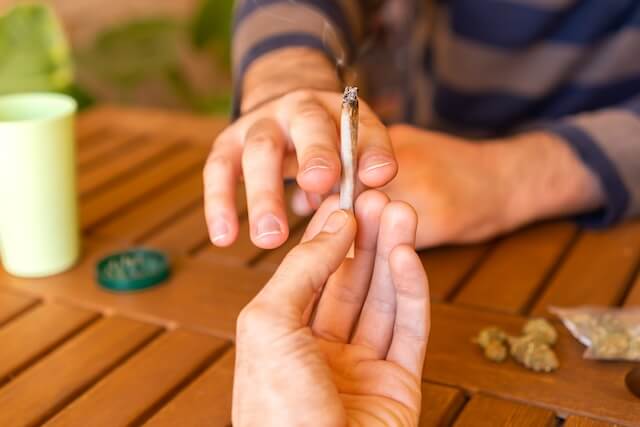
The social clubs’ model has become popular in many countries because it provides several benefits without violating international drug policies. One of the significant advantages is that it aligns with international obligations, which ensures that the distribution of cannabis is safe and legal. Additionally, the model allows consumers to control the product, mitigating the risk of over-commercialisation. It also provides a regulatory framework for quality control and risk prevention. Furthermore, the social clubs help to eliminate the black market while promoting research into cannabis consumption and the design of harm-reduction programs.
In Spain, each CSC determines its production capacity based on the expected consumption level of its members. This means that the supply is tailored to meet the demand of members rather than the other way around.
What’s it like to visit a CSC?
Luckily we managed to get into one of the clubs in Barcelona. Upon arrival, we had to present an ID and follow some simple rules. The funny thing about them was that we were explicitly asked not to use words like “buy” and “price”. Instead, we had to use “acquire” and “value”.
Once inside, the space was organised like any other bar. Friendly and relaxed interior with nice music. Tables and booths where you can sit, smoke and chill. The staff can also provide whatever you need to improve your smoking session – bongs, papers, grinders, etc.
The main difference was the two bars inside – a green one with a budtender and a wet one with a bartender. The green bar offered a decent variety of smokables and edibles, and we were allowed to get as much as we wanted–within 50g per month for dry flower.
What surprised us was the potency. We got a gram of Sativa-dominant hybrid and a cookie, which absolutely wrecked us.
Malta
Malta has followed in the footsteps of Spain by adopting the CSC model for its legalisation program. In 2018, it legalised medical cannabis use, and in 2021, it became the first European country to legalise recreational use.
Under Malta’s laws, individuals can carry up to 7g of cannabis, and households can grow up to 4 plants and store up to 50g of dried cannabis. Additionally, the CSCs are permitted to cultivate cannabis and distribute it among their members.
However, the commercial side of cannabis in Malta remains unclear. There are no licensed businesses, and weed buying and selling is still a grey area. Currently, the only legal way to obtain cannabis is by growing it yourself or through a cannabis social club.
Thailand
Thailand made a major move last year by removing cannabis from its narcotics list, essentially legalising it. However, the government did not formally regulate it, leaving the cannabis industry in a legal grey area. No laws exist on who can grow, use, sell, or distribute cannabis.
This has opened the floodgates for new businesses. Some people are describing the situation as the wild west of weed. For instance, currently, there are close to 5,000 cannabis dispensaries in Bangkok alone, many of which opened their doors on the day when the change was enacted. They offer a variety of flower strains and edibles. Still, there is no proper labelling, so it’s unclear where the products are coming from or who made them. The same goes for their potency. Essentially you rely on the budtender’s word whenever you buy something from the store.
However, this situation has left small-time businesses vulnerable to seizures and closures since the owners don’t know what paperwork they need. There are also uncertainties surrounding the licensing process, and it’s difficult to make business projections.
At the same time, the government insists that this move only concerns the medical and therapeutic uses of cannabis. The goal is to make cannabis a cash crop and to turn Thailand into a regional industry leader while discouraging recreational tourism.
Ironically, the public health minister gave away one million plants to citizens in an effort to encourage home growing. But the lack of regulations means there needs to be clarity about the number of plants people can grow, the amount of dry flower they can possess, and if there are limitations on potency.
Uruguay
Uruguay made history in 2013 by becoming the first country in the world to legalise cannabis for both medical and recreational use. Four years later, the law passed, allowing individuals to possess up to 40 grams of cannabis per month for recreational purposes. However, to do so, they must first register with a regulator.
The Uruguayan government takes a non-commercial approach to legalisation. It controls all large-scale production, requires registration, and limits the weekly quantities that a user may purchase. It also prohibits advertising in all its forms. Users can obtain cannabis from pharmacies, smoke it in social clubs, or grow it at home. The government controls mass production and issues grower licenses. Despite its efforts, however, there is still a thriving black market. It’s sustained by a lack of variety in the legal market, long waiting lists for pharmacy and social club registration, and limited locations. Also, legal products are limited to 10% THC content.
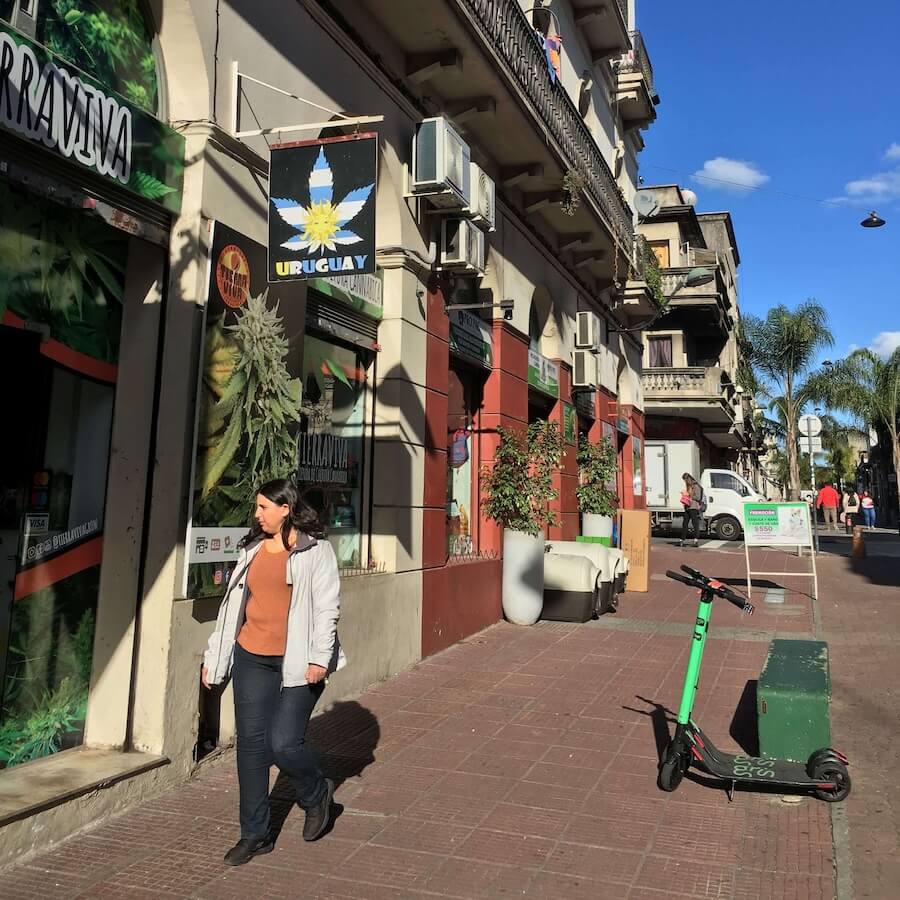
What’s interesting about Uruguay’s case is that legalisation was enacted by a top-down effort from the president and his ruling party, despite opposition from more than 60% of Uruguayans. This is in contrast to the US, where cannabis reforms began via referendum with vast public support for legalisation (over 60% of Americans are in favour).
The main reason behind Uruguay’s move was to combat organised crime and the black market.
Canada
Canada legalised cannabis in 2018. Canadians can carry up to 30 grams and grow up to four plants per household. Additionally, cannabis is commercially available and can be purchased from licensed retail outlets. The federal government controls licensed production, while the provinces handle distribution and sales. The legal market sales have been on the rise since the legislation was introduced, with 64% of consumers purchasing legal cannabis by 2021, as opposed to 39% in 2019, which proves that commercial legalisation is an effective measure against black markets.
The Canadian government aimed to address several key objectives. They wanted to protect the health of youth by restricting their access to cannabis. They also sought to provide a quality-controlled supply of cannabis, reduce illegal activities, and reduce the burden on the criminal justice system. The government’s efforts also include enhancing public knowledge about the health risks associated with cannabis use.
USA
In the US, in the states where cannabis is legal, it can be purchased from licensed dispensaries. However, cannabis remains illegal at a federal level.
We had the chance to experience the industry in California, Oregon and Nevada. We believe it’s the closest thing we can get when considering open access. Cannabis dispensaries are readily available throughout the cities, just like any other store. They offer various flower strains, edibles, cartridges and dabs. All you need to enter is a valid ID.
A fun fact, during the COVID-19 lockdown, cannabis dispensaries were considered essential services along with hospitals and fire departments, so they had to remain open.
Challenges and opportunities in cannabis regulation
Of course, any newly developed system raises challenges that must be overcome.
Compliance with international drug treaties is one of the first hurdles governments face when approaching legalisation. They are legally binding and provide an international framework, which is hard to be amended. They prove to be particularly difficult to manage when regulating a commercial market.
Another issue is the novelty of cannabis laws. Legalised marijuana is still relatively new territory, with few proven successes. It’s difficult to determine the outcomes of pot laws since there is insufficient data to confidently project the future. While governments need existing examples for their programs, there’s currently little information available to support the efficacy of such laws. Additionally, big companies heavily invest in lobbying local governments to grant them licenses to grow on an industrial scale, monopolising the market before it even emerges on the legal scene.
Government and industry mismatch
One of the biggest challenges is the mismatch between government and industry. The delay in implementing laws creates frustration and mistrust between businesses and the government. In addition, government priorities change, creating a vacuum often filled by the black market. With no safety net, producers turn to illicit growing and selling to survive and feed their families, which prompts the government to lean towards more restrictions and seizures. Public trust declines, and economic benefits disappear while crime grows, resulting in a vicious cycle.
On the other hand, the legal grey areas expose small-time businesses to raids and seizures. Without a legislative framework, they are unaware of the documentation they require, the state standards and what they are allowed to do. At the same time, they have difficulties registering their business or applying for loans or government funding. On top of that, they have to deal with public scrutiny that often demonises cannabis businesses.
While the market expands at breakneck speeds, regulation lags behind, creating conflicts, paradoxes, and grey areas. For instance, as already discussed, in the US, cannabis remains strictly illegal at the federal level. The neighbouring states of Oregon and California have legalised the production and consumption of cannabis for recreational use. However, businesses cannot transport cannabis over state lines, because doing so requires the use of federal roads. Whether both states have legalised cannabis, their road network falls under federal jurisdiction. If you are caught transporting cannabis, you are subjected to a $250,000 USD fine and up to five years in federal prison, which is no bueno!
This locks out businesses within state lines. They are unable to expand and fully participate in the economy.
Although cannabis is the most commonly used illicit drug globally, official government documentation is still incomplete, suggestive, or propagandistic. This creates a situation where the general public is not adequately informed about recent scientific findings, which goes against the democratic process where people must make informed decisions about their lives.
Differences in international standards
Dealing with cannabis products globally is incredibly complex due to each country’s differing standards. This creates a logistical nightmare for companies, who must navigate a complex environment to get their products to customers. As of now, every country has its own set of regulations to comply with. This can lead to confusion and difficulty, especially when regulators have differing opinions on what is allowed in the same country. For instance, CBD-infused supplements in the UK are regulated as novel foods. In South Africa, they may be classified as complementary medicine with dosage limits. In such scenarios, companies must individually apply to national regulators. Even then, determining which regulator is responsible for approving which product can be challenging.
We are witnessing the formation of a complex global cannabis supply chain defined by tangled regulation, export standards, and industrial-scale competition, particularly in North America. Navigating the market requires persistence and expertise. A global regulatory framework would help immensely in streamlining the process.
Opportunities in the cannabis industry
With each challenge comes an opportunity!
One potential path towards complete legalisation is decriminalising marijuana at the federal level and also revising international treaties. This would open up new business opportunities and create a more consistent regulatory framework for the industry.
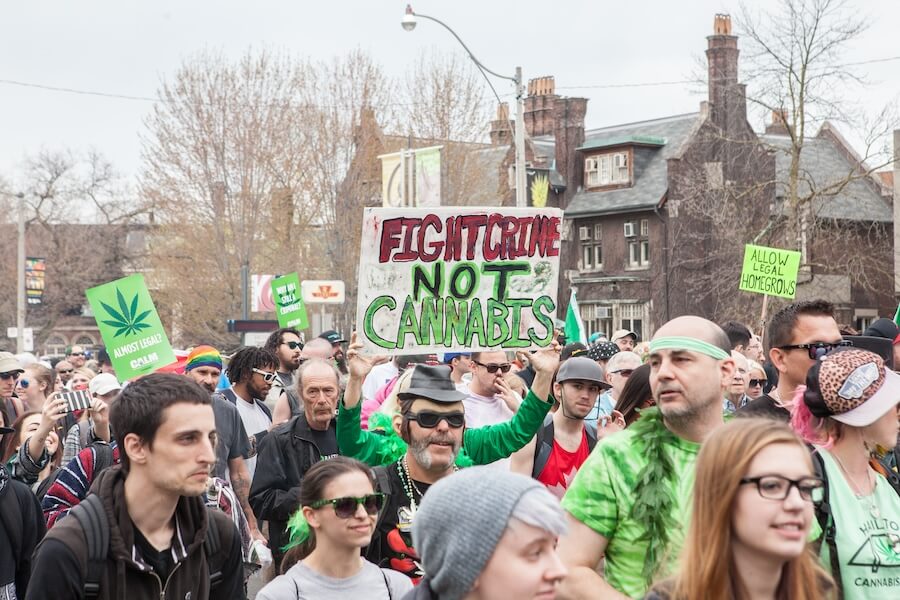
Banking reforms are also needed to support the cannabis industry. Currently, most banks are hesitant to work with cannabis businesses due to federal regulations and potential legal repercussions. This creates significant challenges for cannabis businesses, often forced to operate in a cash-only environment. Reforming banking regulations to allow cannabis businesses to access financial services would create a more stable and secure environment for the industry.
Social inclusion and civil dialogue are also critical factors. While legalisation has the potential to create significant economic opportunities and reduce the harm caused by prohibition, it is also essential to ensure that legalisation benefits all members of society. This includes addressing the historical injustices caused by the war on drugs and ensuring that individuals from marginalised communities have equal opportunities to participate in the cannabis industry.
Conclusion
Prohibition measures are becoming a thing of the past. Global governments are largely acknowledging that the war on drugs has been a failure, where drugs have been the only winner.
A green wave is washing over the planet. One that honours the ancient medicinal and therapeutic role of cannabis, but also uses the plant as a human rights advocate.
Although international treaties still exist, countries recognize the plant’s value and are trying to integrate it into their societies. Some governments see it as a way to boost their economy by industrialising export and supporting business, others – for an innovative medicine designed to treat patients, and thirds – to ease the burden on their justice system, reduce prison sentences and combat organised crime.
North America is leading the legalisation efforts with a robust cannabis market. Europe is following closely, while Latin America and Africa are not far behind.
Still, there are many challenges ahead. Governments have to adjust legislation to an exploding international industry, while preserving small-time producers. They’ll need to create social safety nets, educate the population, and provide funding and structure. And most importantly, they’ll need to communicate and learn from each other.
So, let’s raise a joint (or a glass, if that’s more your thing) to the pioneers who have fought for cannabis legalisation over the years and to the bright future ahead. It’s high time we embraced a more sensible approach to drug policy, and cannabis regulation is a step in the right direction.






Article Comments